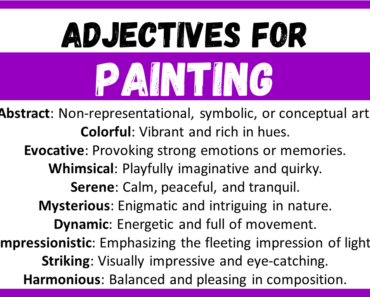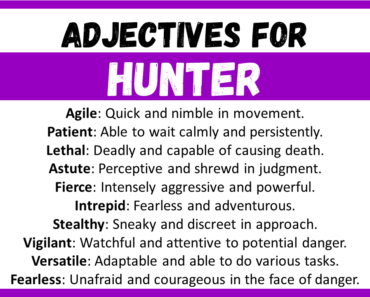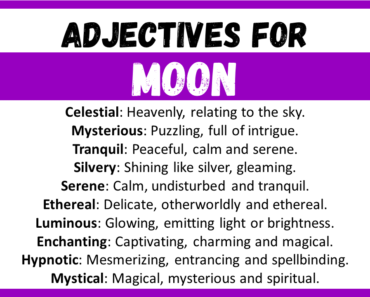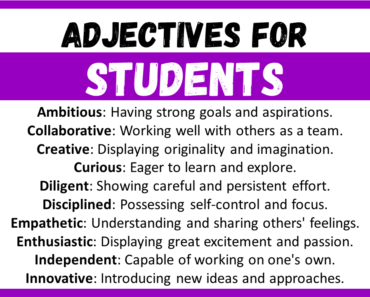Texture refers to the way something feels when touched or observed visually. It adds depth and character to our sensory experiences, be it through touch or sight. Describing texture is an art in itself, as it allows us to convey the intricate details of an object’s surface. From smooth and velvety to rough and grainy, texture words provide a palette to paint vivid pictures in the reader’s mind. In this blog post, we will explore a range of words that aptly describe texture, enhancing our ability to articulate and appreciate the tangible world around us.
Adjectives for Texture
Here are the 20 Most Popular adjectives for texture:
- Smooth
- Rough
- Soft
- Coarse
- Silky
- Velvety
- Grainy
- Bumpy
- Crisp
- Spongy
- Prickly
- Fuzzy
- Gritty
- Slippery
- Fluffy
- Slimy
- Wiry
- Hairy
- Jagged
- Woven
Adjectives for Texture of Food:
- Crispy
- Chewy
- Creamy
- Tender
- Juicy
- Flaky
- Crunchy
- Smooth
- Sticky
- Spongy
Adjectives for Texture in Art:
- Rough
- Smooth
- Textured
- Grainy
- Velvety
- Slick
- Layered
- Coarse
- Intricate
- Embossed
Words to Describe a Texture with Meanings
- Smooth: Even and free from roughness.
- Rough: Not smooth; uneven or jagged.
- Soft: Gentle and yielding to the touch.
- Coarse: Rough or grainy in texture.
- Silky: Smooth and lustrous like silk.
- Velvety: Soft
- raised and smooth like velvet.
- Grainy: Having a rough, granular texture.
- Bumpy: Uneven with or uneven surfaces.
- Crisp: Firm and easily broken or crumbled.
- Spongy: Soft and full of small holes.
- Prickly: Covered in small, sharp points.
- Fuzzy: Covered in fine, soft fibers.
- Gritty: Coarse and containing small particles.
- Slippery: Smooth and causing objects to slide.
- Fluffy: Light, airy, and soft.
- Slimy: Wet and slippery, like slime.
- Wiry: Thin, strong, and flexible.
- Hairy: Covered in hair or bristles.
- Jagged: Having sharp, uneven edges.
- Woven: Interlaced or intertwined strands or threads.
Example Sentences for Texture Adjectives
- The marble countertop was smooth to the touch.
- Be careful when handling rough sandpaper.
- The kitten’s fur was incredibly soft and fluffy.
- The fabric had a coarse texture, like burlap.
- Her evening gown felt silky against her skin.
- The antique chair had velvety upholstery.
- The sugar crystals were grainy and gritty.
- I stumbled on the bumpy road while cycling.
- The freshly baked bread had a deliciously crisp crust.
- The sponge soaked up water, becoming spongy.
- The cactus was covered in prickly spines.
- She touched the peach and felt its fuzzy skin.
- The beach sand was gritty between my toes.
- The floor was slippery after the rainstorm.
- The teddy bear had fluffy fur and a sweet smile.
- The slug left a slimy trail on the ground.
- The wire was wiry and flexible for crafting.
- His face was covered in hairy stubble.
- Be careful not to cut yourself on the jagged rock.
- The fabric was intricately woven with colorful threads.
Explore More Words:
FAQ’s
How to describe texture in writing?
Describe texture in writing by focusing on tactile qualities such as smoothness, roughness, softness, or graininess, using descriptive language that engages the reader’s senses.
What are the adjectives for the texture of fabric?
Adjectives for fabric texture include soft, silky, smooth, coarse, plush, velvety, crisp, delicate, knitted, and woven, which can effectively describe the tactile experience of different types of fabrics.








